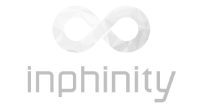Interesting uses of Business Intelligence class systems

Kamil Skuza
Reading time: 8 min
 Date: 2 November 2022
Date: 2 November 2022Business Intelligence class systems are often referred to as uninteresting tools that only extend the capabilities of spreadsheets. They may be useful to the largest corporations in finance and controlling – nowhere else. These are stereotypes.
A BI system can be used successfully to analyse… the measure and weight of fish or the contents of a Greek salad. It sounds abstract, but it happens for real and delivers unimaginable results.
Production
In a factory while filleting fish – how much do you think a head of fish might be worth? In theory: nothing. After all, you peel it off at the very beginning of the process to take care of the interesting part of the carcass. But what if we cut it off (I remind you, a human worker does it) in the wrong place? We cut off too much or too little? Simple, then we lose out as a company. We throw the good, edible parts of the fish into the rubbish, or conversely, we give consumers something on their plate that they don’t want to see and eat (we’ll talk about fish head soup another time, OK?). How do we prevent this? Organoleptically, it is impossible. You cannot control the entire production line and all the employees, on top of working 2 or 3 shifts. But with a BI system? Absolutely, it is possible!

Of course, it requires some improvements – in the factory mentioned above, each fish was weighed before it entered the cut-off area and after it left the operator’s station. This way it was known how much approximately % of the whole fish the head weighed. After implementing a BI system, in this case Qlik, analysts were able to compare how much total fish entered the production line and how much the waste weighed at each employee level. This allowed them to see the correlations – who and on which shift (e.g. day or night) how they were performing. This allowed them to adjust the entire production line, shift schedule and employee comfort to work as efficiently as possible and save as much as possible on unnecessary waste. Although it seemed like an employee’s unfulfilled dream, they too benefited from the implementation of the BI system, as their location and working hours depended on the amount of waste, i.e. the company’s losses or savings. Good resource management is the second half of success, the first is understanding the data.
Transport
In practically every company, managers and decision-makers are looking to optimise costs and make savings. How is this most easily done in airlines? There is one most important factor: weight. The lighter the aircraft, the less fuel used and therefore the greater the savings. It’s just that an aircraft is not a ship, we can’t just throw anything overboard. Besides, the machines are already as light as series production in the aviation industry allows. However, there are more solutions than you might think.

For example, LOT on short- and medium-haul flights has done away with the sale of duty-free items on board aircraft. American Airlines has removed one olive from the Greek salad served during travel. Southwest chain staff started cutting (for drinks) a lime into 16, rather than 10 slices as before. Virgin Atlantic has replaced the glassware of glasses and goblets with thinner glassware. Carrier United replaced the paper on which magazines (with articles and duty-free offers) were printed with lighter paper. And so on. The result? On a per-passenger basis, the saving is almost imperceptible, but globally, on an annual basis, it’s up to several million dollars!
We’re talking about details here, we haven’t even mentioned building lighter seats for passengers, getting rid of printed manuals for attendants (replaced by tablets), or replacing multimedia systems (screens with headphones) with lighter ones too.

It is difficult to arrive at such precise calculations and far-reaching conclusions on your own. However, a business intelligence system was sufficient to continuously monitor the average weight of passengers* and the luggage, meals, products and accessories brought on board. With clear visualisations, managers were able to make quick and accurate business decisions that significantly – in the long term – saved the company money. This would not have been possible without the advanced analytics and predictive modules that BI systems have.
The sentences “I don’t need a BI system” and “in this industry it certainly won’t be useful” do not apply in reality in the vast majority of cases, they are even far from it. Of course, at first glance we may think “it’s not time yet”, but really – what time is right to implement an intelligent system for analysing, understanding, interpreting and predicting data? Any time is the right time. We may not see the benefits of deep analytics today, but there are areas worth exploring right now. We know which direction to take and which path to take to optimise and grow your business. Ask us more in a casual conversation!
*There are airlines where the price per ticket is determined by the weight of the passenger.

We already proved that Business Intelligence class systems are not used exclusively by the largest corporations. It is a tool for companies of all sizes. For anyone who wants to squeeze more than just “dry” numbers from data. It is software, yes, first and foremost for analysts, but it is also for people who want to discover the other side, who need to distance themselves from their subjective perspective, who are open to a bird’s-eye view of business and data. For people curious about the world. Sounds too theatrically? Let’s check it out!

Gastronomy
It would seem that running a restaurant, or even a small bistro or café, is a piece of cake. You hire people, cook good dishes, prepare a menu and voilà, it’s done! Such thinking has lost many a home-grown restaurateur. Running a catering business is a myriad of variables, human factors and even ‘forces majeure’ (blackouts, lack of on-time deliveries, stale products) that you have to face every day. Of course, a Business Intelligence system will not guarantee that meat or vegetables will always be of the best quality or that the service will always be loved by customers. We have to take care of the choice of supplier or the selection of the best team ourselves. But a BI system can help us to oversee all processes. How?
First and foremost, in accounting terms. All invoices, also in the form of a PDF file or a scan of not-bad quality, can be automatically downloaded into our database. Analysis of stock levels and sales is the cornerstone – after all, knowing what dishes and products run out most often (or according to the season) is the basis for increasing turnover. In addition, with the BI system we can also see which waitress or waiter is doing best. By comparing turnover from different shifts, we are able to hazard a guess as to who performs the best service. One of the key factors, the so-called food cost (the cost of the food products required to prepare a served dish), is also very easy for us to check and analyse in relation to many variables (cost of ingredients, delivery, storage, utilities).
You don’t have to be the owner of a chain like Pizza Hut, McDonald’s or Burger King for the implementation of a BI system to make sense and be profitable. Even a single restaurant will benefit from more advanced data analytics and – extremely important today – save money.

Small trade
If you think that a restaurant is the smallest type of business that can successfully use the functions of a BI system then you are mistaken. We know of a case where a BI system combined with an SQL database worked little wonders for a local florist.
Let’s think about it, cut + potted flowers are at least a few dozen indexes that you constantly need to have on offer, which additionally rotates (change) depending on the season. In total, there are more than 100 of them on offer in the shop. After all, we still have ornaments, wreaths, greeting cards and lots of gifts. A total of several hundred to several thousand indexes. When running a business “by the notebook”, it is very easy to get lost in the count. Excel, on the other hand, is not so sophisticated that it can suggest the most popular products and product groups, also taking into account the time of year, their availability, offers from suppliers, etc.
The ability to analyse sales and knowledge of stock levels is essential for even the smallest business. And if we are able to regularly update the data by refreshing it, and the whole thing is presented in an attractive form (after all, it’s a florist’s business, it has to be beautiful), and, on top of that, artificial intelligence tells us what might happen in the near future, is the BI system really the tale of the future, or is it already a reality, even in small trade?
We know both examples from the autopsy. Both companies are thriving thanks to, among other things, Qlik and Power BI. So is not having such a tool a reason to be ashamed? By no means. But to open yourself up to a new one and try it for free on your own (and your business’) skin is a sign of great courage and awareness of modern technology. In your digital transformation journey, however, you don’t have to be alone. We are here to help you. Get in touch with us and find out more!
Source:
See recent writings
You drive us to strive for excellence in delivered projects and common challenges. Feel invited to read out blog that provides more in-depth knowledge on our implementations and experience. Read articles about digital business transformation, ERP and Business Intelligence systems. Discover interesting practical applications for future technologies.
- Blog
Navigating the challenges of introducing new software in a company – the role of technology and social dynamics
Contact us!
Let’s talk! Are you interested in our solutions? Our experts are happy to answer all of your questions.
 pl
pl

















